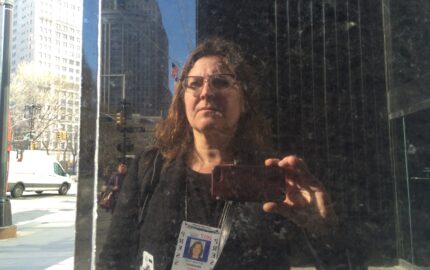A friend reached out this past week, asking if I would chat with a friend of his. The second friend — I'll call her J — runs a non-profit news organization on the West Coast. It was barely a year old when the coronavirus pandemic stalled many of its plans. Now J is trying to pivot, fast, to doing most things — from reporting stories to supporting staff to building audience to raising money — in the virtual world. Our conversation was a wide-open brainstorm about the possibility of a series of online workshops. We zeroed in on three questions that I have found useful to any writing or project work.
These may seem obvious to the point of duh! But I think most of us, myself included, tend to plan forward — or not really plan at all. We may have a vague notion of what we want to achieve, but we hack our way there, often wasting time on time-sucking detours. Or we finally gain traction on a project, only to hit deadline and have to go with what we've got — which is far less than we now know is possible. (Side note: If that happens, don't abandon that bigger possibility. Find a time and way to go back to it.)
When I was dragged into editing, and then stumbled into teaching, I had to learn to think differently than I had when I was bashing my way through stories. Reporters on my team or students in my classes had little patience for my inarticulate musings or on-the-fly instincts. I realized I had to think clearly about the destination so together we could help map out the most efficient and productive journey. (Key to this, by the way: Mapping a few alternate routes, because you never know when you'll run into a roadblock, like a source who shuts down access or a pandemic that shuts down pretty much everything. Also stay open to a better destination if it presents itself along the way, but take care not to get distracted by the squirrels.)
Far smarter people than I have more sophisticated ways to do this; my three questions are pretty basic. But they have served me well to help find focus whether I'm coaching a story, outlining a syllabus, or cleaning my garage. They are my rudimentary version of reverse engineering or, in the lingo fo Stephen Covey's habits, beginning with the end in mind.
We can explore each of these questions more fully in the future, but as a quick example, let's go back to J.
She had a great starting point: organize and host a short series of online workshops or conversations. But ...
This isn't the end of the planning work, by the way. But as someone who is definitely not a planner by nature (I live a bit too happily in the World of Wing-it), I find it helps put the rest of the work I need to do in a more manageable box. It heads off those detours and cuts down on the flailing. It especially helps me decide what not to do — which is so, so hard.
- Who is your primary audience?
- What message do you most want to get to that audience?
- What specific information will support that message?
These may seem obvious to the point of duh! But I think most of us, myself included, tend to plan forward — or not really plan at all. We may have a vague notion of what we want to achieve, but we hack our way there, often wasting time on time-sucking detours. Or we finally gain traction on a project, only to hit deadline and have to go with what we've got — which is far less than we now know is possible. (Side note: If that happens, don't abandon that bigger possibility. Find a time and way to go back to it.)
Mapping your way(s) to the destination
When I was dragged into editing, and then stumbled into teaching, I had to learn to think differently than I had when I was bashing my way through stories. Reporters on my team or students in my classes had little patience for my inarticulate musings or on-the-fly instincts. I realized I had to think clearly about the destination so together we could help map out the most efficient and productive journey. (Key to this, by the way: Mapping a few alternate routes, because you never know when you'll run into a roadblock, like a source who shuts down access or a pandemic that shuts down pretty much everything. Also stay open to a better destination if it presents itself along the way, but take care not to get distracted by the squirrels.)
Far smarter people than I have more sophisticated ways to do this; my three questions are pretty basic. But they have served me well to help find focus whether I'm coaching a story, outlining a syllabus, or cleaning my garage. They are my rudimentary version of reverse engineering or, in the lingo fo Stephen Covey's habits, beginning with the end in mind.
We can explore each of these questions more fully in the future, but as a quick example, let's go back to J.
She had a great starting point: organize and host a short series of online workshops or conversations. But ...
Primarily for whom? Does she most want to reach journalists to help support better work? Policy makers to nudge their awareness of issues? Potential funders? Other media that may pick up her site's stories? News followers who may want to subscribe to her site? (Note the word "primarily." Audiences overlap. You want your reach to be as broad as possible. But without a primary focus, you have diluted mush.)
To what end? If she's speaking to funders, the message needs to make it clear why they should pony up some money. That's not at odds with a workshop series about how to do great journalism — indeed, each needs to serve the other — but the choice and proportion of information shift.
And with what? If the workshops are for journalists, J has to decide what specific reporting and writing tips she wants to offer, and who has expertise she can tap. If they are meant to draw attention to her site, she might want to build a series that has more of an inspirational bent, with marquee speakers.
This isn't the end of the planning work, by the way. But as someone who is definitely not a planner by nature (I live a bit too happily in the World of Wing-it), I find it helps put the rest of the work I need to do in a more manageable box. It heads off those detours and cuts down on the flailing. It especially helps me decide what not to do — which is so, so hard.



